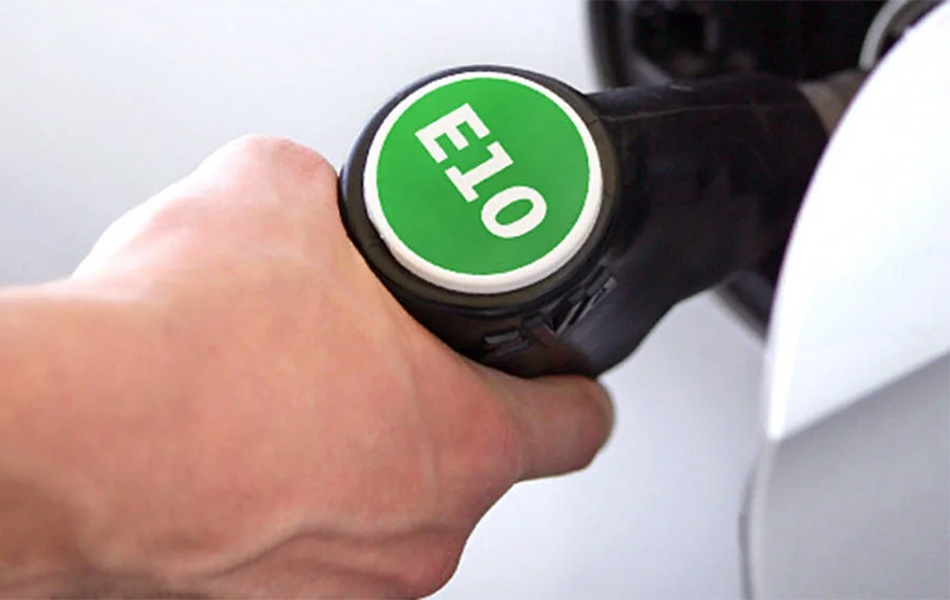
Using E10 fuel (which contains 10% ethanol and 90% gasoline) is generally safe for most modern vehicles, but it can potentially cause damages or issues in certain situations, particularly with older vehicles or those that aren’t designed to handle ethanol-blended fuel. Ethanol has properties that can lead to fuel system corrosion, material degradation, and fuel efficiency problems under certain conditions. Below are some of the key damages or issues associated with using E10 fuel:
1. Corrosion and Damage to Fuel System Components:
- Rubber and Plastic Parts: Ethanol can be corrosive to certain materials, especially older rubber seals, gaskets, and hoses used in fuel systems. Over time, it can cause these components to crack, swell, or degrade, leading to fuel leaks and potentially dangerous situations like fires or engine failure.
- Fuel Lines and Fuel Tank: In older vehicles with metal fuel lines or tanks that weren’t designed to handle ethanol, prolonged use of E10 can lead to rusting and corrosion inside the tank and fuel lines. This can cause blockages, fuel delivery issues, and even damage to fuel injectors.
- Fuel System Deposits: Ethanol can also cause the buildup of sediment or gunk in the fuel system, especially if the vehicle isn’t regularly used, or if the fuel has been sitting in the tank for an extended period. These deposits can clog the fuel filter, fuel lines, and injectors, leading to reduced fuel flow and engine misfires.
2. Water Contamination:
- Ethanol is hygroscopic (it absorbs moisture from the air). When water mixes with ethanol, it can form phase separation in the fuel tank. This means the ethanol and water may separate from the gasoline, creating a layer of water at the bottom of the tank.
- This water contamination can lead to problems like:
- Rust in the tank and fuel lines.
- Corrosion of metal fuel system components.
- Poor engine performance or stalling due to water in the fuel system.
- Clogged fuel filters or injectors if water makes its way through the system.
3. Reduced Fuel Efficiency:
- Ethanol has a lower energy content compared to gasoline. As a result, E10 fuel generally provides slightly less energy per gallon than pure gasoline, leading to a reduction in fuel efficiency (miles per gallon). On average, you might see a drop of about 3-5% in fuel economy when using E10, though this varies depending on the vehicle and driving conditions.
- In older engines, where fuel management systems may not be as optimized for ethanol, the efficiency loss can be more noticeable.
4. Potential for Clogged Fuel Injectors and Filters:
- Over time, ethanol can break down impurities in gasoline, including dirt, rust, and other contaminants that have built up in the fuel system. These impurities can then clog the fuel injectors and fuel filters.
- Clogged injectors can lead to poor combustion, engine misfires, and loss of power, while a clogged fuel filter can impede fuel flow, causing the engine to stall or run erratically.
5. Impact on Older Engines or Classic Cars:
- Older vehicles (pre-2000s) may not have been designed to handle ethanol-blended fuels like E10. This means fuel system components such as gaskets, seals, and hoses may not be compatible with ethanol, leading to deterioration or leaks over time.
- Carbureted engines: Older vehicles with carburetors may also experience poor fuel atomization or carburetor clogging due to the chemical nature of ethanol, which can cause engine hesitation, stalling, or difficulty starting.
- Fuel tank and lines: Ethanol can degrade the internal lining of older fuel tanks, particularly in metal tanks that weren’t designed with ethanol in mind, leading to rust and potential fuel contamination.
6. Increased Vapor Lock Risk:
- Ethanol has a higher volatility than gasoline, meaning it evaporates more easily at lower temperatures. In certain conditions, especially in warmer climates, the increased volatility can lead to vapor lock, a condition where the fuel vaporizes in the fuel lines, preventing the engine from getting a consistent fuel supply.
- Vapor lock can cause the engine to stall or fail to start, especially in older vehicles or those with carbureted systems.
7. Accelerated Wear on Engines Not Designed for E10:
- For vehicles not designed for ethanol-blended fuels, especially older models or cars with poorly maintained fuel systems, the continual use of E10 may lead to increased wear on fuel pumps, fuel injectors, and engine components.
- Combustion inefficiency: While E10 is generally fine for modern engines designed to run on ethanol-blended fuels, older engines with improper combustion characteristics may suffer from carbon buildup, which can cause misfires, rough idle, or poor performance.

